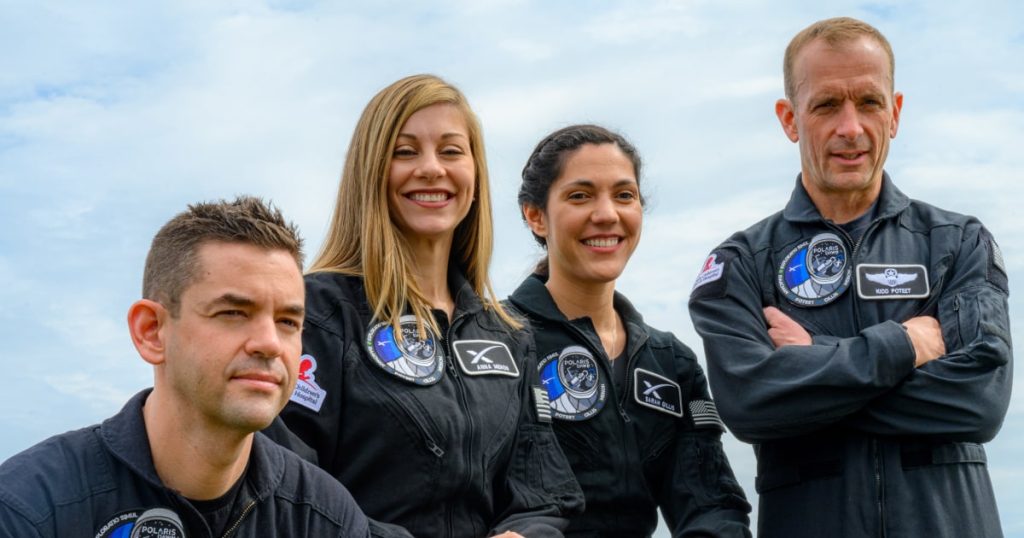The four civilian crew members of the Polaris Dawn mission recently returned to Earth and shared their experience in an exclusive interview with NBC’s Lester Holt. The crew members, including billionaire entrepreneur Jared Isaacman, retired Air Force Lt. Col. Scott “Kidd” Poteet, and SpaceX engineers Sarah Gillis and Anna Menon, described the emotional side of their five-day journey. They discussed the awe-inspiring views of Earth from orbit, the weightlessness of being in space, and the world’s first all-civilian spacewalk. The crew launched into orbit on September 10 and splashed down in the Gulf of Mexico early Sunday, experiencing the thrill and anxieties of plummeting through Earth’s atmosphere with only the spacecraft’s heat shield protecting them from extreme temperatures. Isaacman described the high G-forces experienced on re-entry as a “heck of a ride downhill.”
During their journey, the crew reached the highest orbital altitude since the final Apollo moon mission in 1972 and completed a risky, first-of-its-kind spacewalk. Isaacman and Gillis spent around 10 minutes in the vacuum of space to conduct mobility tests in newly designed spacesuits. The spacewalk was a landmark moment in commercial spaceflight as previously only astronauts from government space agencies had conducted spacewalks. The crew members spent two-and-a-half years training for the Polaris Dawn mission, choreographing and rehearsing each step of the spacewalk. Gillis said the flight demonstrated the capabilities of private companies in space exploration and may have sparked imagination from a different perspective. The entire crew took part in the spacewalk as the Dragon capsule does not have an airlock, resulting in the entire vehicle being depressurized and exposed to vacuum conditions.
Isaacman, who funded the mission in partnership with SpaceX, sees the Polaris Dawn mission as a stepping stone toward future long-duration trips to the moon and Mars. The crew members also raised money for St. Jude Children’s Research Hospital during their time in orbit. By reaching an orbital altitude of 870 miles above Earth’s surface, the crew passed through the inner regions of the Van Allen radiation belt, studying the effects of radiation exposure and gathering data to understand how to protect people and spacecraft from the harsh conditions of outer space. Isaacman emphasized the goal of making humans a multiplanetary species, with spaceflight serving as a means to inspire and educate people for future exploration.
The Polaris Dawn mission is part of a larger program that includes two additional flights, though the total cost and timeline for the program have not been disclosed. The ultimate goal of the Polaris program is to make humans a multiplanetary species, with spaceflight serving as an avenue for learning, inspiration, and future exploration. Isaacman believes that by continuing to push boundaries in space exploration, people can learn, be inspired, and undertake bigger and bolder missions. The crew members of the Polaris Dawn mission are excited to contribute to scientific research, including studying the human response to radiation exposure, to further humanity’s understanding of space and prepare for future missions to other celestial bodies.


